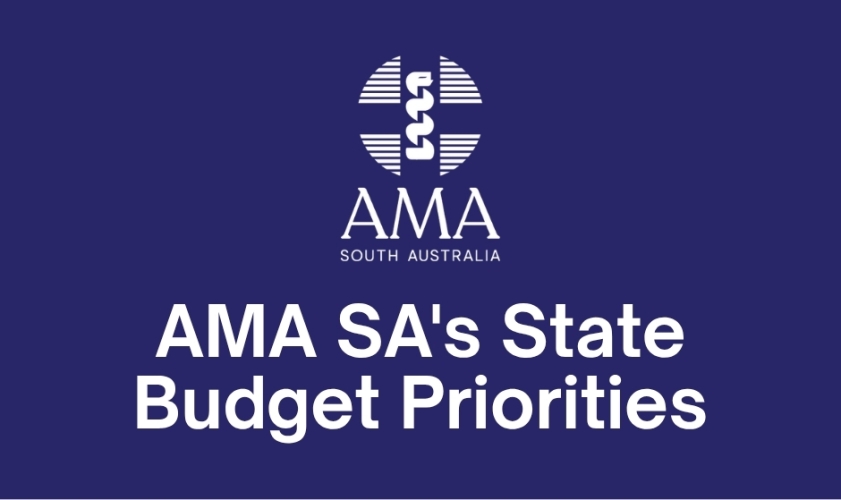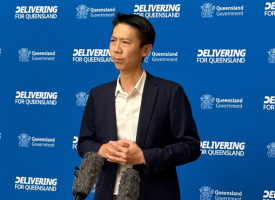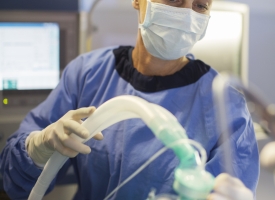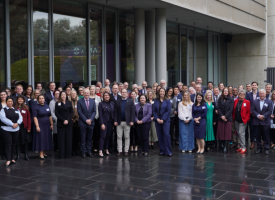A resilient health workforce a must for State Budget investment
The Australian Medical Association in South Australia (AMA SA) is calling for long-term investment in building a sustainable health workforce in the State Budget to be handed down on Thursday.

New AMA SA President A/Prof Peter Subramaniam says significant investment and focus is required to attract, retain and train doctors, nurses and allied health practitioners to South Australia.
‘We’ll be looking for evidence of where the government has invested the funds it’s collected from payroll tax on GP specialists,’ A/Prof Subramaniam says.
‘AMA SA remains concerned that this policy risks reducing bulk billing rates, increasing patient out-of-pocket costs, and placing further pressure on GPs – without any clear commitment that the revenue will be directed back into community health services.
‘New measures to attract and keep world-class doctors in this state would be a great place to start.’
A/Prof Subramaniam says a long-term commitment to building the health workforce is essential to addressing the ongoing crisis in the health system, which he says is symbolised by the unacceptable number of hours patients are spending on hospital ramps and the length of essential surgery waiting lists.
‘Ambulance ramping has now become a normalised phenomenon, which is troubling. The AMA’s “Ambulance Ramping Report Card” released in April highlights a deteriorating situation,’ A/Prof Subramaniam says.
‘Ramping, long ED wait-times and postponed surgeries have almost become the “new normal”. South Australia’s doctors will be examining the Budget for measures that care for people at home and in their communities, as we know these are much cheaper than ED presentations and hospital admissions.
‘Access to timely GP care is an important solution to keep our EDs focussed on patients who need them.’
He says the AMA will also be looking for data indicating how much revenue the State Government has collected in the payroll tax on private appointments, after last year’s Budget did not include any figures on the tax.
‘We’re expecting to see what the government has received from a tax that has and continues to have a real impact on the cost of visits to GPs and other specialists,’ A/Prof Subramaniam says.
‘We also expect that all the revenue collected from that tax has been invested directly in health services such as linking hospitals with GP and non-GP specialists in private practice.’
A/Prof Subramaniam says discussion during the AMA SA Round Table on 9 May generated many ideas for improving care before patients ‘reach the ramp’.
‘It is immediately evident that participants attributed many of the gaps in care to workforce issues, siloes between community care and hospitals, and communication breakdowns,’ he says.
‘Many of the issues we believe are contributing to these gaps – linking GPs to tertiary care, providing a care-coordination role in the community, expanding successful virtual health and telehealth services – were among our Budget priorities a year ago.
‘We expect to see a Budget for 2025-26 and the forward estimates in which funding for GP-led care will help people stay and be cared for in their communities.’
AMA SA recommends the following investments to increase access to world-class care, now and in future generations.
Building a resilient workforce
- Develop and implement strategies to address the geographic and specialist maldistribution of doctors
- Invest in evidence-based programs to boost junior doctors’ psychosocial safety
- Work with the universities to increase medical students’ exposure to general practice and rural medicine during their undergraduate studies
- Fully fund the recommendations of the SA Psychiatry Workforce Plan to grow the specialist psychiatry workforce to provide and lead needed mental healthcare
- Establish funded training positions for IMGs in general practice, rural hospitals and the private sector (including pathology)
- Identify how to attract, retain and integrate international medical graduates (IMGs) in South Australian communities, including in remote regional areas, and advocate for dual recognition pathways (i.e., general and specialist registration) in areas of need.
- Establish incentives to add to the Australian Government’s commitment to train more GPs, attracting world-class doctors and other health practitioners to South Australia’s regions
Health services and infrastructure
- Funding to support clinical involvement in the planning and ‘future proofing’ of the new WCH, including ensuring workflow designs and workspaces promote safe, modern and connected care
- Invest in digital systems to improve connections between and access to services across the state, including centralised e-referrals for GPs and non-GP specialists
- Invest in infrastructure and resources to maintain standards of care at the existing Women’s and Children’s Hospital (WCH)
- Invest in mental health services in the community, including monitoring and evaluating the impact of the Urgent Mental Health model.
- Funding to measure and report on the impacts on patients of recently introduced policies such as pharmacy prescribing of UTI medications
- Increase community health services for Indigenous communities.
Other portfolios
- Invest in road, footpath and other transport infrastructure to support safe driving, walking, cycling and other road use.
For interview requests please contact Media Advisor Ben Terry on 0478 847 604.



